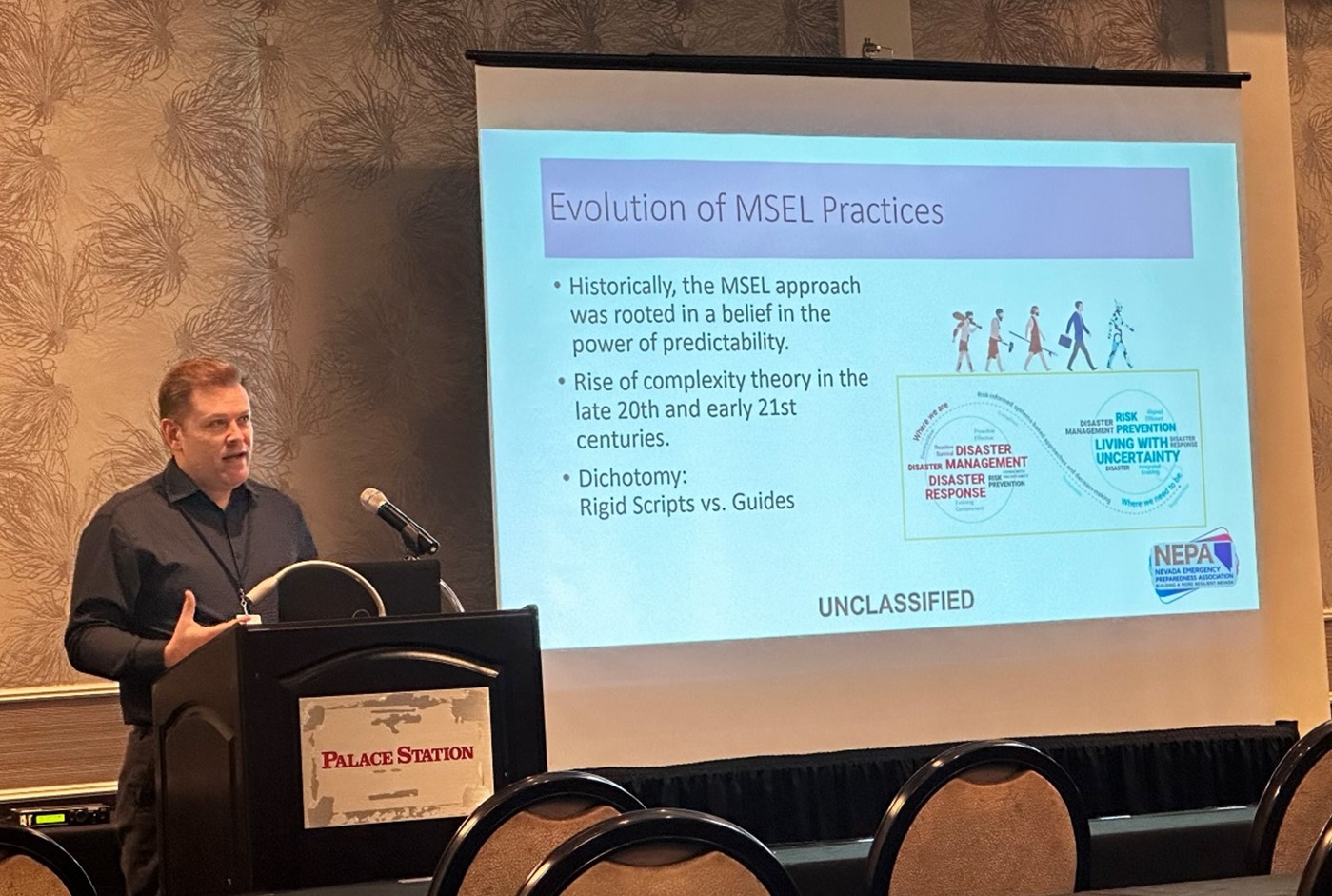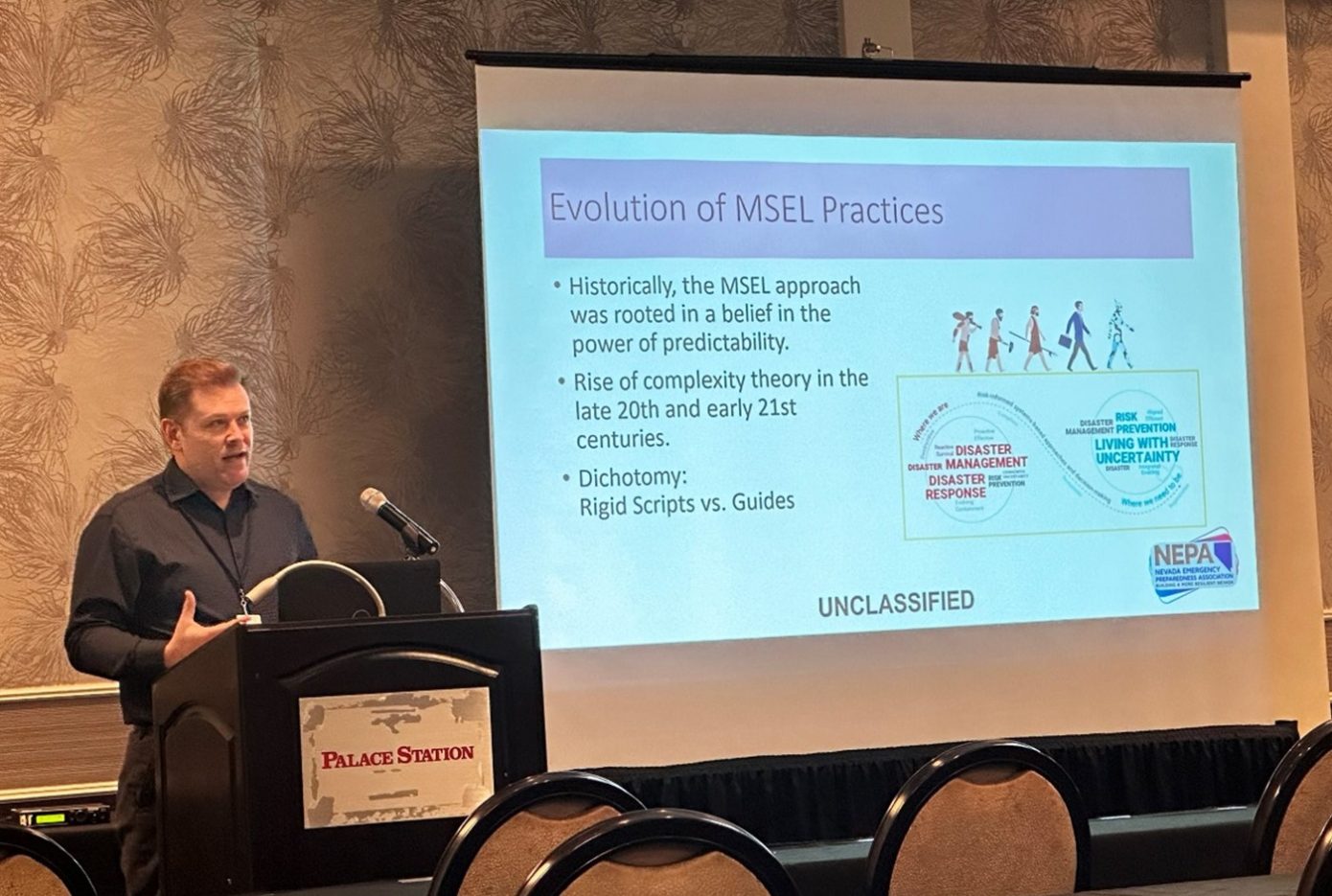Emergency management leaders spanning the Nevada Emergency Preparedness Association’s southern, western, and eastern chapters met in Las Vegas February 27 and 28 to discuss the opportunities and challenges facing the region. The Nevada National Security Sites’ (NNSS) Operations Command Center (OCC), Emergency Operations Center (EOC), Emergency Planning and Remote Sensing Laboratory-Nellis (RSL-N) Nuclear Emergency Support Team (NEST) were among the subject matter experts sharing the innovations, best practices, and trends affecting emergency management today.
This year’s keynote address by former Federal Emergency Management Agency (FEMA) Administrator Brock Long focused on how organizations must build agility to improve their resiliency, which NNSS OCC/EOC Manager Lucas Basham Murphy notes is an essential priority for his team.
“People took Brock’s fireside chat with the group to heart,” said Basham Murphy. “He spoke about the importance of the emergency management profession and the changes needed to be more resilient. We must get better at practicing for the unknown, not be as rigid in our processes and be fluid at exercises to practice for what is unknown. That’s something we can apply at NNSS in our preparedness.”
The summit also featured presentations by Basham Murphy, who discussed the evolution of Master Scenario Event Lists in emergency preparedness, and RSL-N Manager Chris Cacace and National Nuclear Security Administration Nevada Field Office Physical Scientist Jordan Arnswald, who spotlighted NEST capabilities. Basham Murphy shared a paradigm shift approach to constructing integrated flexibility into the Master Scenario Event Lists process, enabling adaptivity for real-world conditions and enhanced preparedness. Master Scenario Event Lists are used by emergency management professionals to provide event milestones and anticipated responses during exercises.
The NNSS EOC has made significant strides in the last year in diversifying its cadre of emergency response professionals through a coordinated recruitment campaign among the NNSS workforce. By expanding the number of personnel capable of supporting emergency preparedness and response, the EOC can integrate new skillsets and backgrounds into the EOC’s operations, planning, and logistics functions, furthering the NNSS’ emergency response agility and growing its network engagement.
The NNSS OCC/EOC has also invested time and resources to build fundamental planning partnerships between the NNSS and stakeholder organizations at local, state, and national levels. Aligning with FEMA’s updated National Response Framework for collaboration between government and private-sector organizations, this guidance enables emergency management officials to build integrated planning strategies and common operating objectives.
“The NNSS having such a strong presence at the Nevada Emergency Preparedness Association’s summit shows we are a partner that organizations can rely on,” added Basham Murphy. “Our premier national security work is supported by a foundation of emergency management professionals who support our safety and security when called upon. We’re proud to work among a network of emergency management leaders here in Southern Nevada and across the nation.”


